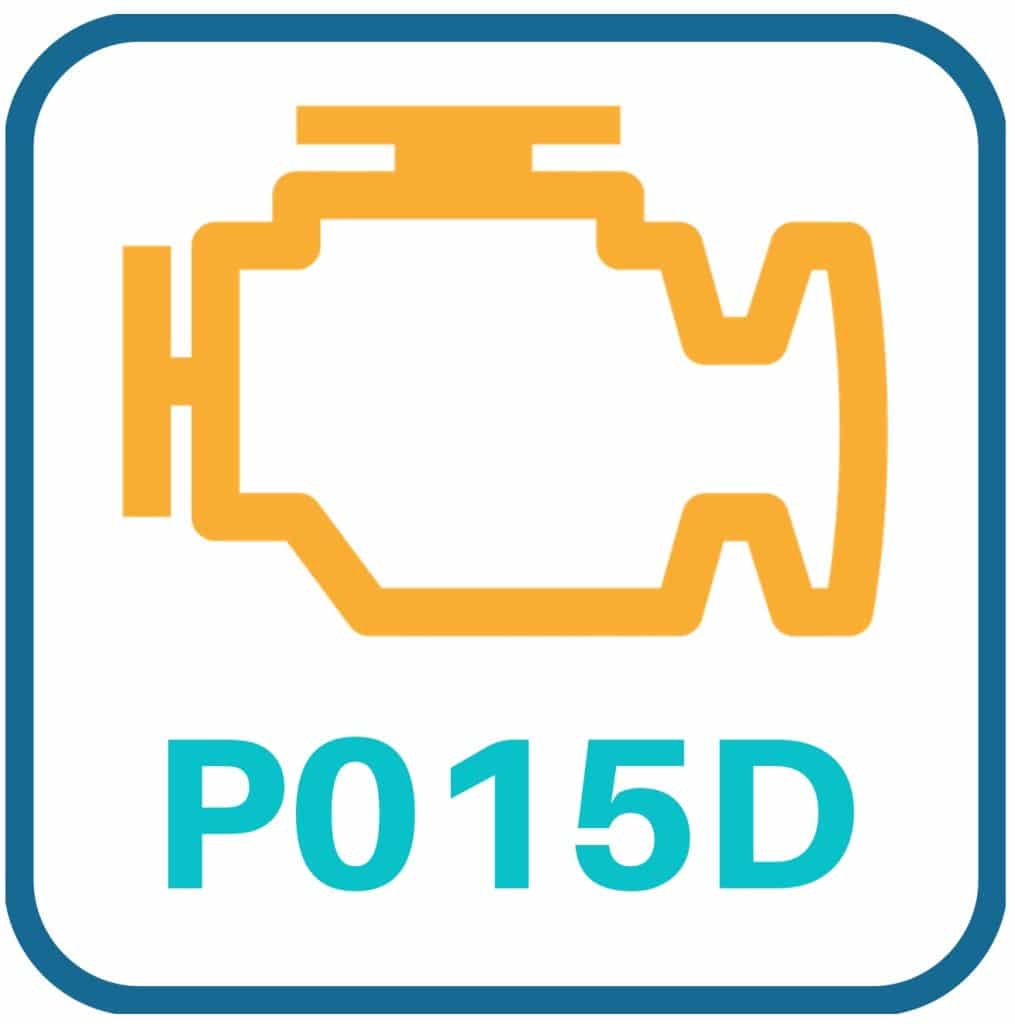P015D is a generic trouble code, which means that it has the same definition for the Nissan Frontier as it would any other vehicle. The code indicates that the Oxygen (O2) sensor on bank 2 is not cycling from lean to rich as fast as it should be.
P015D is usually caused by a bad oxygen sensor, but there can also be other causes as well.

P015D Definition: O2 Sensor – Delayed Response Lean to Rich (Bank 2 Sensor 1)
Here’s the definition of P015D for the Nissan Frontier, broken down into its three main parts (it has the same basic definition for the Nissan Frontier as it would any other vehicle).
O2 Sensor
Your Frontier’s oxygen sensors are responsible for metering the air as it exits the engine and travels through the exhaust system. The powertrain control module (PCM) uses this data to optimize the air-fuel ratio.
Delayed Response Lean to Rich
The oxygen sensor sends data to the PCM as a voltage value. When the PCM richens the air/fuel ratio, the oxygen sensor in question is not reporting the change fast enough. When this happens, P015D is stored in its memory, and the check engine light will come on.
Bank 2 Sensor 1
- Bank 2: The side of your Frontier’s engine with the second cylinder. With most engines, the first cylinder is the cylinder that’s furthest away from the flywheel/flexplate. Bank 2 is the opposite cylinder head. The bank 1 version of this code is P015B.
- Sensor 1: S1 is the first sensor in line on the bank 2 side of the engine. It’ll usually be on the exhaust manifold or directly after it. Sensor one is the most important sensor for exhaust metering.
Nissan Frontier: P015D Symptoms
There are usually symptoms related to P015D. Here are the most common ones:
- Low engine power, stuttering, or misfiring
- Check engine light
- Decreased fuel economy
- The smell of gas
Nissan Frontier P015D Causes

Here’s what you can do to diagnose P015D at home. We’ll start with what’s easy to check and work our way up from there.
Wiring Harness Damage
O2 sensors are notorious for having wiring harness issues, this is due to their proximity to the exhaust system. The hot pipes can make the wiring brittle.
Inspect your Frontier’s B2S1 wiring harness for burnt, cracked, or otherwise damaged wiring. If it’s damaged, repair it, and that should clear P015D.
Exhaust Issues
When diagnosing P015D, there can be two scenarios. The first is that the oxygen sensor is bad, either due to an internal issue or a wiring problem. The second is that the O2 sensor is working fine and that the data it’s recording is accurate.
Exhaust issues are the way scenario two happens. If your Frontier’s catalytic converter is clogged, the exhaust gases can be delayed getting to the tailpipe. This increase in exhaust pressure can lead to a delayed change in recorded values from the oxygen sensor, which will be recorded as P015D. If both sides of the engine flow into one catalytic converter, you’d almost certainly have P015B too if this were the case.
An exhaust leak can cause the same exact scenario, but you would be able to hear it leaking.
The rest of this P015D diagnosis section will focus on determining if the B2S1 O2 Sensor is bad or not.
Bad Oxygen Sensor

Bad Oxygen Sensor – Swap Test (Very Simple and Easy Test)
Since your Frontier has two cylinder banks, you can do the “swap test.” This involves clearing the codes and seeing if the code “jumps” to bank 1.
Here’s how the swap test is done:
- Clear the DTC codes with your scanner.
- Swap the Bank 2 Sensor 1 O2 sensor with the Bank 1 Sensor 1. It’ll be on or right after the exhaust manifold.
- Run the engine until the check engine light comes back on.
- If the code changes to P015B on the Bank 1 side, that’s proof enough you need to replace the oxygen sensor you swapped.
- If the code remains P015D, you’ll need to continue pursuing your diagnosis, knowing that both O2 sensors are working fine.
Bad Oxygen Sensor – Capture the Short/Long Term Fuel Trim Values
If you happen to have access to a scan tool, you can use it to capture your Frontier’s short and long-term fuel trim values. You’ll need to ensure that the engine is warmed up before doing this.
Doing this will help you determine if the O2 sensor is operating within spec without looking under the hood or crawling under your vehicle. Compare the values that you captured with your tool with the values the manufacturer specifies.
While this isn’t a skill most DIY mechanics have, the concept is simple, and you can learn enough to use fuel trim to your advantage by watching this 11-minute video (it’s worth it).
Conclusion
P015D in the Nissan Frontier is most likely caused by a bad O2 sensor. Good luck repairing your vehicle!

